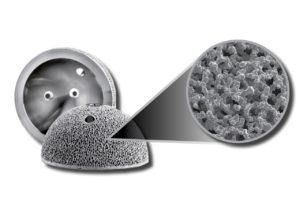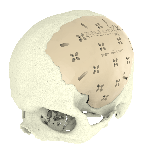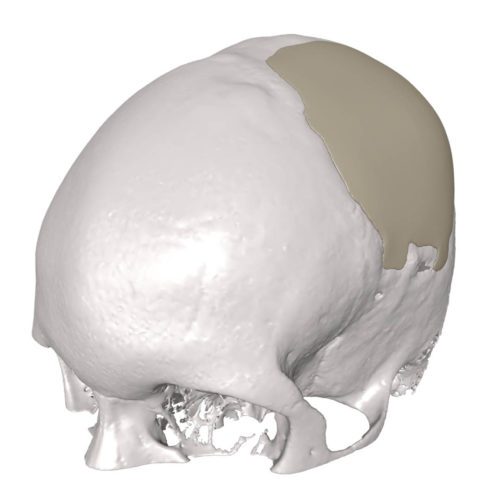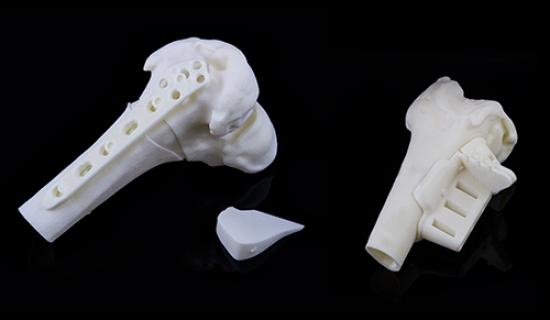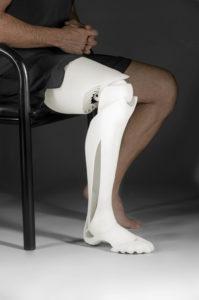3D printing has had and will continue to have impacts on many areas. One of the most hotly anticipated areas for 3D printing to impact is medicine. A myriad of stories have appeared pointing to all manner of exciting innovations in the medical field. Sadly many of the “3D printed ear/nose/heart/ etc.” stories have been rather disingenuous or are at the very least very optimistic. To give you a more accurate view of the possibilities of 3D printing in medicine we’ll look at one particular area: surgery. In surgery there are a number of things happening currently with 3D printing and a number of things that may happen. In general we can say that 3D printing will have a considerable impact on surgery in the near term but that we can not fully predict future impacts at this moment. First we will look at what is happening right now in medical offices, surgical theaters and in patients.
3D Printing in Surgery: What is Happening Now?
Medical Models
By 3D printing medical models, students, doctors and other staff members can get a hands-on learning experience of a pathology, organ or a part of the human anatomy. 3D prints can be made illustrating all manner of conditions or states. These models can be touched, passed around, discussed and are used as a learning tool worldwide. They can be used by residents, medical students, nurses or even to help patients understand their condition or operation. Initially 3D printed medical prototypes were high end and often hand painted affairs. They cost hundreds or thousands of dollars and competed with hand made models. Now desktop 3D printed medical prototypes are providing for an extremely low cost alternative. For $10 an individual student could print a model to study it herself.
3D Systems subsidiary Medical Modeling has a Craniofacial Model Skull library. For $3995 plus shipping you will get a collection of 16 skull models showing you, in each a “characteristic dysmorphology of the particular congenital anomaly prior to any intervention” in a wooden display case.
The National Institutes of Health even has an Exchange where you can share and download medical models and 3D print them.
Unique Medical Models for Surgical Planning
In surgical planning medical models have been used to guide extensive teams through complex surgeries. In cases such as conjoined twins or other high risk or highly complex procedures models can help teams to train or prepare. Through 3D printing CT, MRI or other scanning data can be converted into a unique 3D print that shows the surgical team the actual organ that they will operate on. Blood vessels and veins can be identified, specific problems can be shown right in front of the team’s eyes.
Stratasys has shown how its Objet PolyJet technology can be used to make patient-specific vascular flow models, while 3D Systems’ healthcare facilities can bring 3D printed medical models right into the operating room.
Formlabs desktop 3D printers are being used to make patient-specific medical models for surgeons.
Titanium Orthopedic Implants
More than 10,000 titanium orthopedic hip implants are implanted in patients every year. These implants are cheaper to produce than conventionally made ones. Acetabular cups are usually made with the Arcam EBM process but can also be made with DMLS (powder bed fusion, SLM).
EBM was often criticized for having a rough surface texture. It is this texture plus the ability of the acetabular cup to be changed in order for its pore size and density to promote bone growth that means that these cups outperform those made with conventional means, at lower cost.
Patient-specific titanium implants are a research area of great interest to many orthopedics companies. In the extremities, knees, neck, femur, tibia etc. companies are looking to patent, develop and launch suitable 3D printed orthopedic implants. We’ve reported on titanium jaw implants and spinal devices.
Plastic Patient-Specific Implants
PEEK is a very exciting material, also for implantology. Xilloc Medical and other companies have been 3D printing and implanting PEEK patient-specific implants in a (limited) number of test patients. The ability to quickly create a custom implant that is safe to use in the patient and comparatively low cost is the key factor here.
Xilloc’s Interfix technology also predetermines the number and positioning of locations for screws. This can reduce the number of screws needed. Xilloc will even 3D print the screw length next to the right hole so the surgeon remembers to use the right screws.
MedCAD lets you upload the file and receive your medical implant within one day. Essentially it is a Shapeways for cranial implants, or Amazon Prime for PEEK implants.
For CMF and other surgeries custom 3D printed implants have been used for years and the scope of the application area is widening.
Surgical Guides
Based on CT or MRI data surgeons can produce a custom surgical guide for hip, knee, shoulder and other surgeries. This surgical guide is then 3D printed and can be used in the operating room. The surgical guide will indicate where the surgeon should drill or cut and can then after the procedure be removed. Usually surgical guides are made with Selective Laser Sintering (SLS, LS, Laser Sintering, Powder Bed Fusion) in materials such as PA 12, polyamide.
These custom and cost-effective surgical guides minimize risk and are used in tens of thousands of patient procedures worldwide.
Prosthetics
E-NABLE is one of the most inspiring things happening in 3D printing right now. The making of low-cost prosthetics by desktop 3D printer users is to be applauded. In addition to what e-NABLE is doing many people are experimenting with creating custom 3D printed prosthetics in many different ways, including bionics.
Scott Summit’s innovations in fairings, scoliosis braces and prosthetics are probably well known by now. Others are following in his path to make beautiful innovative prosthetics. What is not yet being done in any real way is to combine the technology for patient-specific implants and prosthetics in such a way as to create prosthetics to aid in direct surgical recovery or to help people who need unique temporary prosthetics either immediately before or immediately after surgical procedures. Rather than using a standard brace or cast patient-specific prosthetics could be made so the patient heals in a specific way immediately after surgery.
What May Happen: 3D Printing Scaffolds for Organs & Direct Bioprinting
A lot of research is going into 3D printing scaffolds to then grow organs on top of these scaffolds. Researchers are using high-end bioprinters or more low-cost bioprinting devices. Materials such as PLLA used on desktop FDM 3D printers to print scaffolds is making these kinds of procedures more commonplace. Clinical approval for these is however years away.
The same thing goes for using bioinks to 3D print organs directly or 3D printing cells directly. Regardless of the number of 3D printed noses, kidneys or livers you may have seen pass you by on Facebook, this is very much a lab activity at the moment. Most practitioners think that directly 3D printing a complex functioning organ and implanting it into a patient is 30 years or more away. Even if we had some kind of overnight success, the certification and approval path would still take several years to do. The news that you see passing you by is often a researcher doing a funding request via the media. Often the only thing 3D printed was a rendering or the organ in question has the shape that it must have and consists of cells but is in no way a functional organ. What is possible currently is to 3D print simple cells and tissue. This can be, on a test basis, implanted in test patients.
If we do manage to 3D print organs successfully then it would greatly assist a lot of people with failing organs. Skin grafts, new hearts or new livers would prolong life for many. Theoretically, if we could 3D print most organs a person could live indefinitely as long as they were completely OK with having cancer all the time. These profound ethical questions are, probably, a ways into our future however. Whereas research into biofabrication and bioprinting continues apace we are probably years removed from ordering a new set of lungs on Amazon.
Subscribe to Our Email Newsletter
Stay up-to-date on all the latest news from the 3D printing industry and receive information and offers from third party vendors.
You May Also Like
3D Printing Financials: Fathom Struggles in Financial Quicksand During Critical Transition
Facing a year of key transitions and financial pressures, Fathom (Nasdaq: FTHM) has filed its annual report for 2023 with the U.S. Securities and Exchange Commission (SEC). The document outlines...
Latest Earnings Overview for Australian 3D Printing Firms Titomic and AML3D
Australian 3D printing manufacturing firms Titomic (ASX: TTT) and AML3D (ASX: AL3) reported their financial results for the period from July to December 2023, marking the first half of their...
3D Printing Webinar and Event Roundup: April 7, 2024
Webinars and events in the 3D printing industry are picking back up this week! Sea-Air-Space is coming to Maryland, and SAE International is sponsoring a 3D Systems webinar about 3D...
3D Printing Financials: Unpacking Farsoon and BLT’s 2023 Performance
In the Chinese 3D printing industry, two companies, Farsoon (SHA: 688433) and Bright Laser Technologies, or BLT (SHA: 688333), have recently unveiled their full-year earnings for 2023. Farsoon reported increases...



